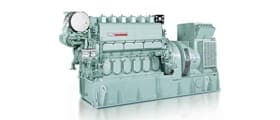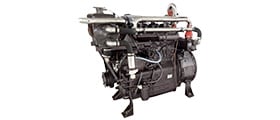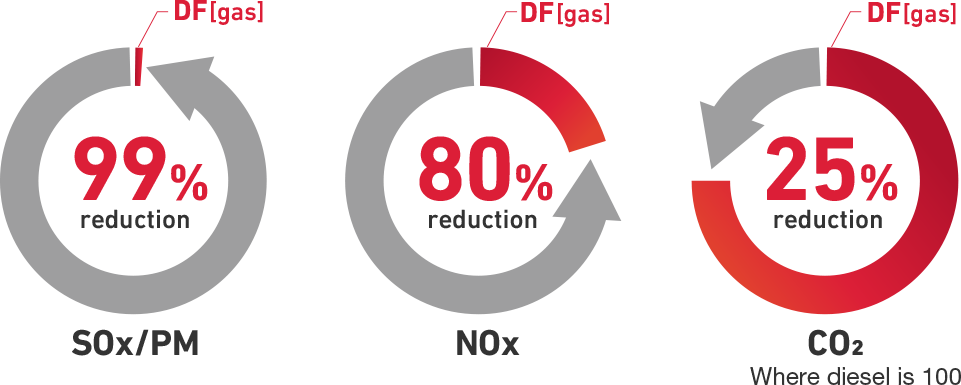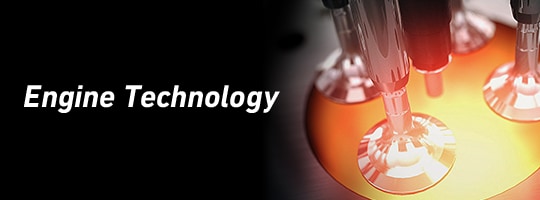Engines that consider global environment and operate with high economic efficiency
Large vessels operating in the seas around the world are equipped with engines with high power. An issue confronting our world today is the air pollutants from the emission of those large engines. In recent years, the use of natural gas has attracted attention. Liquefied natural gas (LNG) is environmentally friendly and can reduce greenhouse gases. Therefore, Yanmar has begun developing the dual-fuel engine that can flexibly use both LNG and diesel fuel to take advantage of eco-friendliness and wider availability. We set the goal high to develop a new engine complying with The International Marine Organization (IMO) Tier 3 NOX (IMO3) and SOX regulations for all sea areas based on a reliable model that can pursue improvements in the life cycle value (LCV) for customers.
Effective since January 1, 2016, the 3rd tier regulation (IMO3) is that IMO requires on the standard of NOX emission control. IMO3 to regulate 80% lower emissions than the primary regulation, is applied within a designated sea area called NOX Emission Control Area (N-ECA). The US and Canadian coasts, the U.S. Caribbean, the North Sea and the Baltic Sea have already been regulated for SOX, while the U.S. and Canadian coasts have already been regulated for NOX. The North Sea and the Baltic Sea will be subject to regulation from January 1, 2021.

 Agriculture
Agriculture
 Combine Harvesters
Combine Harvesters
 Rice Transplanters
Rice Transplanters
 Marine Commercial
Marine Commercial
 Compact Equipment
Compact Equipment
 Industrial Engine
Industrial Engine
 Recreational Marine
Recreational Marine
 Energy Systems
Energy Systems
 Power Generation
Power Generation
 YEBISU Marine Engine
YEBISU Marine Engine

















